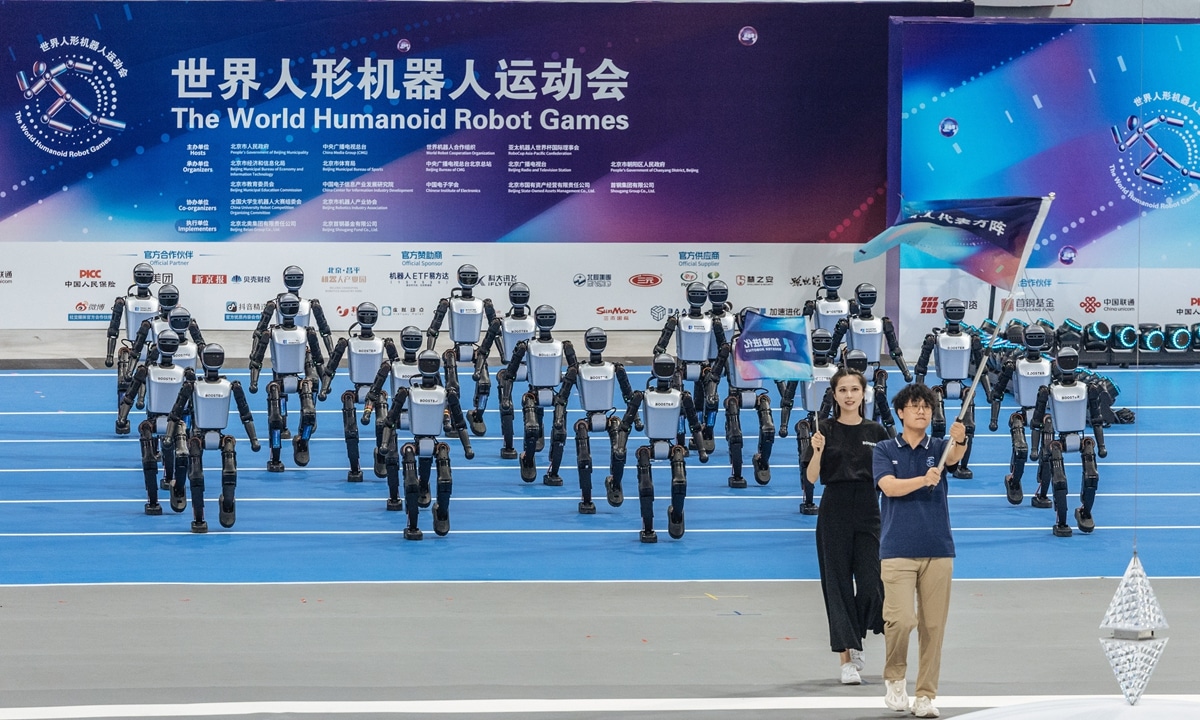In August 2025, Beijing hosted the world’s first World Humanoid Robot Games (WHRG), a global competition that brought together over 500 humanoid robots from 16 countries. Robots competed in races, football, boxing, sorting tasks, and creative performances.
The Games weren’t just entertainment—they were designed to test robot speed, balance, coordination, and practicality, proving how far humanoid robotics have advanced and highlighting the challenges still ahead.
What Are the World Humanoid Robot Games?
The World Humanoid Robot Games 2025 were created to showcase humanoid robots in a competitive, Olympic-style format. Unlike industrial robots or research demos, these events pushed humanoids to perform in real-time, unpredictable conditions.
Goals of the Games:
-
Test physical capability (running, balance, recovery).
-
Measure coordination in dynamic environments.
-
Show practical applications (sorting, carrying).
-
Inspire innovation through global rivalry and collaboration.
Which Countries Competed?
A total of 16 countries entered robots into the 2025 Games.
-
China: Dominated the medal tally, with strong showings from Unitree Robotics and X-Humanoid.
-
South Korea: Represented by the K-Humanoid Alliance, highlighting national robotics initiatives.
-
Japan: Continued its tradition of advanced robotics with balance-focused entries.
-
United States & Europe: Contributed cutting-edge research robots from universities and startups.
💡 Search keyword: “Which countries competed in the World Humanoid Robot Games 2025?”
Events at the 2025 Humanoid Robot Games
The Games were divided into events testing speed, agility, teamwork, and usefulness.
1. Humanoid Robot Racing
-
100m sprint and 1,500m endurance races.
-
Fastest 1,500m time: just over 6 minutes.
-
Many falls and recoveries entertained the crowd and demonstrated engineering breakthroughs.
2. Robotic Football Matches
-
Teams of humanoid robots battled in soccer games.
-
Tested ball control, teamwork, and decision-making.
-
Robots struggled at times but delivered thrilling moments.
3. Humanoid Robot Boxing
-
Robots squared off in physical combat.
-
Challenges included stability, power, and agility.
-
AI-driven anticipation made some bouts look almost human.
4. Sorting & Industrial Tasks
-
Robots had to sort objects, carry loads, and perform factory-like operations.
-
Showcased potential for logistics and manufacturing applications.
5. Cultural & Creative Displays
-
Robots performed hip-hop dances, martial arts, and synchronized shows.
-
Highlighted humanoids as entertainers and companions, not just workers.
💡 Search keywords: “Humanoid robot boxing 2025” | “Robot races Beijing” | “Robotic football games”
Who Won the World Humanoid Robot Games 2025?
-
Unitree Robotics (China): Multiple medals in racing and coordination events.
-
X-Humanoid (China): Strong performance in football and sorting.
-
South Korea: A standout dribbling demo in robot football.
-
Individual Stars: One robot completed the 1,500m race without falling—an engineering milestone.
💡 Search keyword: “World Humanoid Robot Games winners 2025”
Why the World Humanoid Robot Games Matter
The WHRG is more than a sporting event—it’s a benchmark for humanoid robotics.
-
Proves readiness: Robots can perform human-like tasks under pressure.
-
Drives innovation: Competition encourages breakthroughs.
-
Global rivalry: Countries showcase progress in the “robot race.”
-
Public engagement: The Games make robotics more relatable and exciting.
Challenges Exposed by the Games
Despite progress, robots still face key limitations:
-
Balance issues on uneven surfaces.
-
Battery life constraints during long events.
-
Dexterity problems with fine motor tasks.
-
Slow decision-making compared to human reflexes.
💡 Search keyword: “Challenges of humanoid robots 2025”
The Future of Humanoid Robot Competitions
The success of Beijing’s WHRG suggests this is only the beginning. Future editions may include:
-
More countries and teams joining the Games.
-
New challenges like obstacle courses, firefighting, or rescue missions.
-
Corporate sponsorships from major tech firms.
-
Integration with AI competitions, blending physical skill with machine intelligence.
Some predict humanoid robot sports could rival esports or motorsports in popularity.
What Does This Mean for Society?
The Games highlight the real-world potential of humanoid robots:
-
Manufacturing & logistics: Sorting and carrying mirror warehouse tasks.
-
Healthcare & elder care: Balance and coordination useful for assistance.
-
Disaster response: Racing and obstacle events simulate rescue scenarios.
-
Education & culture: Competitions inspire the next generation of engineers.
By framing robots as athletes, the Games help the public view them as partners, not replacements.
Conclusion
The World Humanoid Robot Games 2025 in Beijing marked a new era in robotics. With 500 robots from 16 countries, events ranging from races to football to boxing, and strong performances from China, South Korea, Japan, and beyond, the Games were both entertaining and groundbreaking.
They revealed how far humanoid robots have come, exposed challenges that remain, and inspired visions of a future where humanoids may assist in factories, hospitals, and homes.
Much like the Olympics, the WHRG is set to become a recurring global showcase—and a milestone in humanity’s journey toward advanced robotics.




